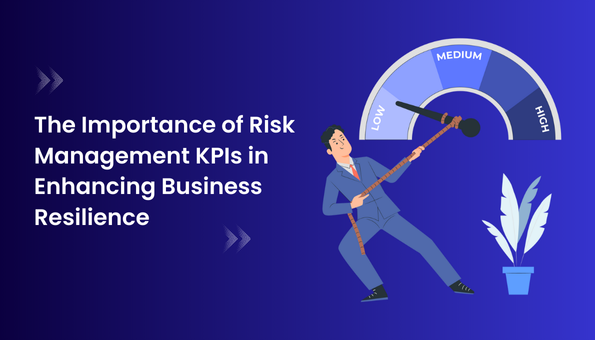Unlocking the Real Importance of Risk Management for Continuous Growth
Unlocking the Real Importance of Risk Management for Continuous Growth
Blog Article
Checking out the Significance of Risk Management for Effective Decision-Making Techniques
In the elaborate world of organization, Risk Management arises as a vital consider the decision-making process. The capacity to recognize possible risks and possibilities, and strategize appropriately, can spell the distinction in between success and failing. With tools such as SWOT and PESTEL, organizations are outfitted to make enlightened choices, cultivating resilience and adaptability in an ever-changing atmosphere. Wondering how this functions? Let's unbox the dynamics even more.
Understanding the Concept of Risk Management
Risk Management, a vital component in decision-making, is typically misconstrued or oversimplified. Risk Management includes regimented and structured strategies, utilizing information and informative analyses. From financial uncertainties, legal responsibilities, tactical Management mistakes, to mishaps and all-natural catastrophes, it resolves different dangers - importance of risk management.
The Function of Risk Management in Decision-Making Processes
In the realm of tactical planning and service procedures, Risk Management plays an indispensable function in decision-making processes. It aids in recognizing prospective risks and uncertainties that could affect the achievement of organization objectives. By tracing these threats, firms can develop techniques to reduce their impact, guaranteeing service continuity and security. Risk Management therefore ends up being a crucial tool in decision-making, assisting leaders to make educated options based on a detailed understanding of the dangers involved. It motivates a positive strategy, making it possible for companies to prepare for and prepare for feasible future situations. This significantly reduces the possibility of unfavorable repercussions, advertising much more effective and efficient decision-making techniques. As a result, Risk Management works as an important element in the decision-making processes of any organization.

Exactly How Risk Management Enhances Strategic Preparation
In the context of strategic planning, Risk Management plays an essential function. Initiating with the recognition of possible dangers, it additionally includes the execution of Risk mitigation measures. The function of Risk Management is dynamic but not static, as it requires constant monitoring and adjusting of methods.
Recognizing Prospective Risks

Applying Risk Reduction
Risk mitigation strategies can range from Risk evasion, Risk transfer, to take the chance of decrease. Each approach must be customized to the certain Risk, considering its potential impact and the organization's Risk tolerance. Efficient Risk reduction requires a deep understanding of the Risk landscape and the prospective impact of each Risk.
Tracking and Adjusting Approaches
Though Risk mitigation is an essential step in strategic preparation, internet continuous surveillance and change of these methods is equally vital. This recurring process permits organizations to recognize new risks and reassess existing ones, making certain the applied methods remain efficient in the ever-changing business setting. It also supplies an opportunity to assess the success of the Risk Management steps, permitting modifications to be made where essential, further boosting tactical preparation. Effective surveillance and modification call for the usage of analytics and essential efficiency indicators (KPIs) to gauge efficiency. These devices offer beneficial data-driven insights that can inform critical decision-making. Therefore, surveillance and changing Risk Management approaches is an important part for enhancing a company's durability and strategic preparation.
Instance Researches: Effective Risk Management and Decision-Making
In the world of business and money, effective Risk Management and decision-making commonly serve as the pillars of thriving enterprises. These instances highlight the worth of sharp Risk Management in decision-making processes. These cases emphasize the important function of Risk Management in calculated decision-making.
Tools and Techniques for Reliable Risk Management
Browsing the detailed labyrinth of Risk Management needs the appropriate collection of techniques and devices. These devices, such as Risk signs up and warm maps, aid in determining and assessing possible dangers. Techniques include both quantitative approaches, like sensitivity analysis, and qualitative methods, such as SWOT evaluation. These help in focusing on risks based upon their potential effect and probability. Risk feedback methods, an essential part of Risk Management, entail approving, preventing, transferring, visit this website or mitigating threats. Monitoring and controlling dangers, with normal audits and reviews, make sure that the approaches remain effective. With these tools and methods, decision-makers can browse the complex landscape of Risk Management, thereby assisting in educated and reliable decision-making.
Future Fads in Risk Management and Decision-Making Approaches
As we explore the huge landscape of Risk Management, it becomes evident that the tools and techniques used today will remain to develop. Future trends point in the direction of an enhanced reliance on technology, with expert system and machine learning playing significant duties. These technologies will make it possible for organizations to predict possible dangers with greater precision and make more informed choices. Furthermore, there will be an expanding emphasis on resilience, not simply in handling risks yet also in getting better from negative circumstances. The concept of Risk society, where every member of a company is conscious and involved in Risk Management, will certainly get much more prestige. These fads advertise a more aggressive and inclusive approach in the direction of Risk Management and decision-making.
Verdict

Risk Management therefore becomes a vital tool in decision-making, aiding leaders to make enlightened selections based on a detailed understanding of the dangers involved. Risk mitigation strategies can vary from Risk avoidance, Risk transfer, to take the chance of reduction (importance of risk management). Efficient Risk reduction needs a deep understanding of the Risk landscape and the prospective impact of each Risk. Risk feedback methods, a crucial component of Risk Management, entail approving, preventing, transferring, or mitigating threats. The principle of Risk culture, where every participant of a company is conscious and included in Risk Management, will gain much more importance
Report this page